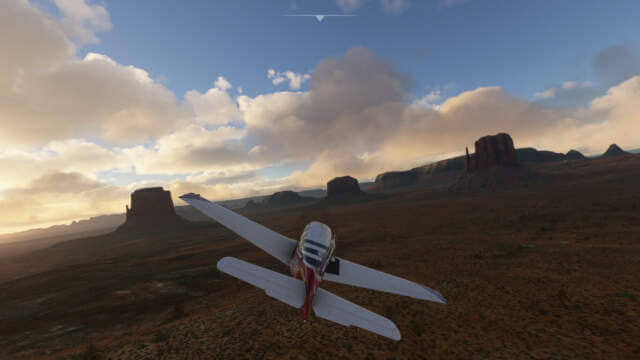I haven’t played Microsoft Flight Simulator 2020 (MSFS 2020) for quite a few months because of other commitments and let’s face it, it’s the kind of sim that you need to dedicate time, patience, and skill to. Anyway, the game has been given some major updates since I landed the last time, with new, more detailed airports and cities, aeroplanes, and some important performance improvements for the PC. This time around I decided to fully complete the flight training section, something I didn’t do on my first outing because I was keen to get stuck in, resulting in some dodgy landings.
Install To An SSD
Because the flight sim loads a lot of data it’s advisable to install the data files to an SSD because the read/write speeds are so much faster than a spinner/conventional drive. In fact, you can test that fact using Crystal Disk Mark and wonder at the incredible speed differences. In my case, I had to make space on an M.2 SATA drive from a previous Windows install and move MSFS 2020 to a new folder on that drive and I noticed the difference immediately. Here’s what I mean:
Once I’ve cleared space on my NVMe boot drive, bearing in mind that MSFS 2020 needs around 125GB of space plus later add-ons, I’ll move the install directory across and see an even greater speed improvement.
Recalibrate The Joystick
The first thing I did was recalibrate the Logitech Extreme 3D Pro joystick, which can be done in Windows by hitting the Windows key + R then typing joy.cpl. This is important because the huge update resets practically everything and it’s no bad thing to calibrate from time to time anyway.
Flight Training
Ask yourself this — are you going to jump into an aeroplane and attempt to fly from Heathrow to JFK having never touched a yoke, let alone seen the inside of a plane’s cockpit? No, I thought not, so as I mentioned earlier, I thought it best to refamiliarise myself with flying, from the ground up so to speak and the best place to start is Flight Training. Fortunately, skill fade hadn’t taken too much of a toll and the first training flights ended without a hitch with me thinking that I’d passed with A+ in every test. However, my instructor was less than enamoured and suggested that a bit more practice would be a good idea. She was right, so I went through each section of flight training several times over on the basis that you may think you know it all, but in reality, you don’t. My average score is still between B and C, and that’s only on a single-engine Cessna, but I’ll keep practicing until I’m ready to handle an airliner.
Performance On PC
While the frame rate is apparently capped at 60 fps, which is perfectly normal for a flight sim, the performance is greatly improved since the updates, not least because it now runs using DirectX 12. I haven’t noticed any major stuttering or issues since I revisited flying and it’s clear that the developers have listened to customers and applied numerous improvements, many of which were asked for. I’ll conclude with a short video of my first solo flight after flight training in which I managed to land without destroying the aircraft.
—






Did you hear about the 212 story Australian building found in 2020 version?
Is it still there?
Take a look at this 15min You Tube of a guy trying to land on top of it. Quite funny.
https://www.youtube.com/watch?v=4AVNifp3_M4
Hi Ron
I haven’t seen that one yet, but I have seen airborne elephants!